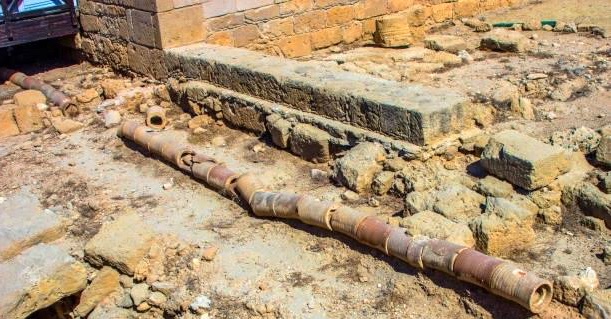Mesopotamia
Skara Brae
The pipe below is part of the remains of a drainage system from Lothal, Gujarat, the Indus Valley Civilisation (northwestern India and Pakistan), from c 2500 BCE. Houses of the city drained water to a central sump outside of the city.
A stone toilet that is 2700 years old, was found in the Armon Hanatziv neighbourhood of Jerusalem, made of carved limestone.
In southern Vietnam, at the Rạch Núi archaeological site, a toilet has been found dating back to 1500 BCE
Skara Brae, the largest island of Orkney, Scotland, consists of a c.3000 BCE village, with a number of small houses without roofs. Each house had a toilet, with a sewer system, draining effluent to the ocean.
Indus Valley Civilisation
Jerusalem
Vietnam
Rome
Almost every city in ancient Rome had large public latrines. However, it was the Etruscans who constructed the first underground sewers in the city of Rome around 500 BCE.
For example, at Ostia Antica, 25 kilometres southwest of Rome, public latrines lie along 3 walls, with washbasins between 2 entry doors near the Forum.
The public sit on holes cut into marble. Under the seats, a deep channel flowing from the drain of one of the Public Thermal Baths would take away waste.



